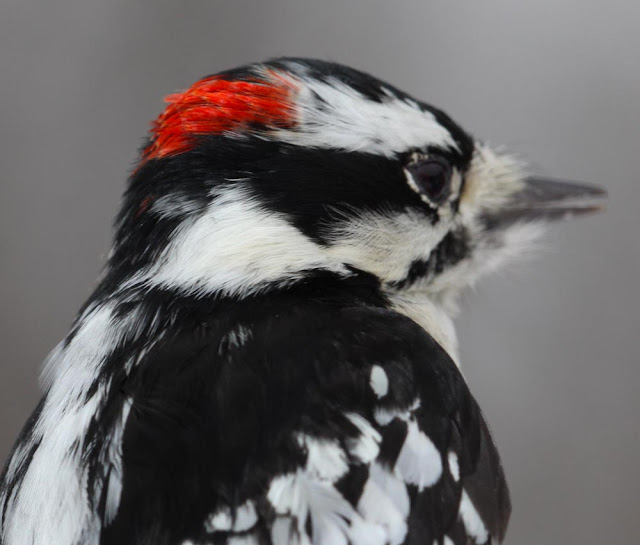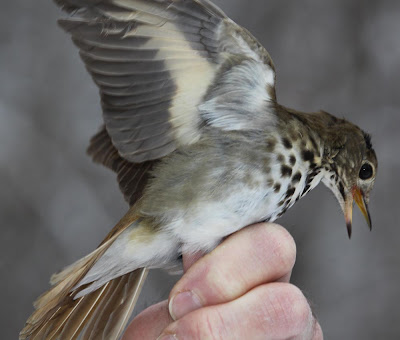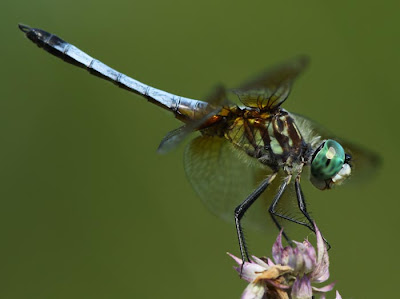Hairy and Downy Woodpeckers look almost identical. Hairys are bigger than Downys, but unless they are seen side by side outdoors, that doesn't help much. One of the easiest ways to tell the difference is in the length of the beak. In proportion to its head, the Hairy's beak is quite a bit longer and stouter than the Downy's beak, pictured below.
The white feathers around the eye are different with each individual of both species, so that is no help in telling the difference in species.
I photographed these two woodpeckers at yesterday's bird banding program at Springbrook
Another way of telling the difference is in the red on the back of the head of the male woodpeckers. In the Hairy Woodpecker the red is separated by a black patch in the middle, as seen in the picture to left. But in the Downy's, as you can see in the next picture below, the red is one solid band across the back of the head.
An unusual capture at Springbrook's bird banding yesterday was this Hermit Thrush. They should have migrated south long ago. The light colored stripe under the wing is one way to identify these thrushes in flight. Primarily though, the easiest way to sepatate this thrush from all the others is the rusty red color of the rump and tail, as seen in the picture below.

































